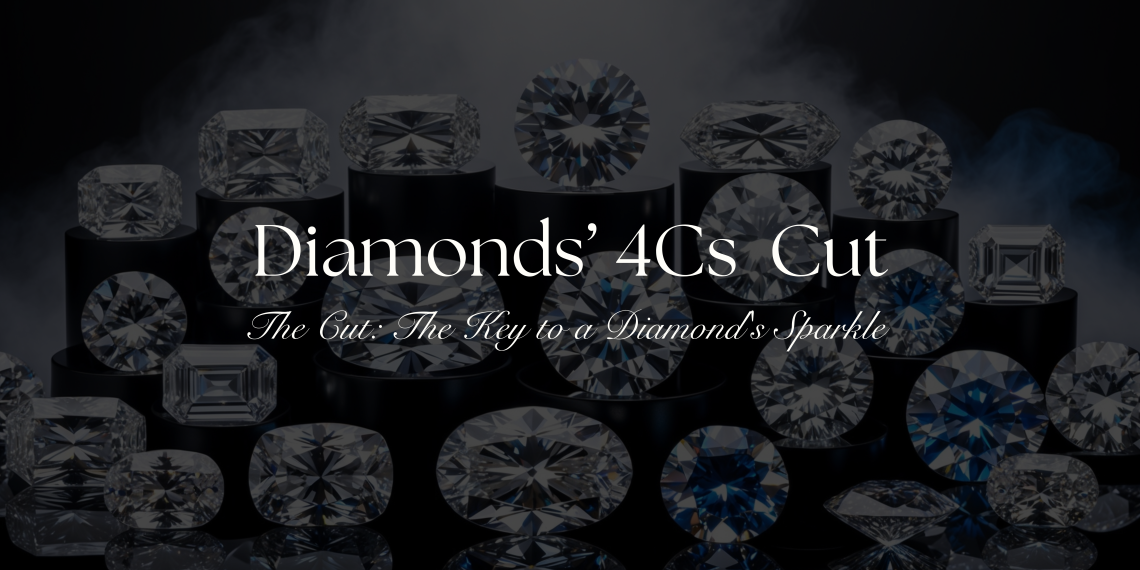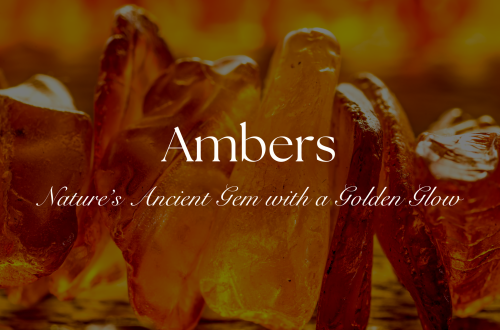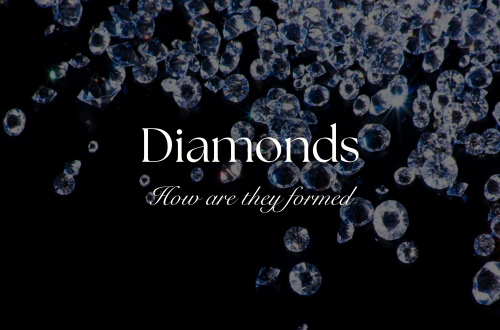The Cut: The Key to a Diamond’s Sparkle
When it comes to diamonds, the cut is arguably the most critical of the 4Cs—Cut, Carat, Color, and Clarity. It’s the cut that determines how well a diamond interacts with light, creating the sparkle and brilliance that make diamonds so captivating. Let’s delve into the nuances of diamond cut and why it plays such a pivotal role in the allure of these precious gems.
Understanding Diamond Cut
The term “cut” in the context of diamonds refers not to the shape (such as round, oval, or princess) but to how well the diamond’s facets are proportioned and finished. A diamond’s cut influences its light performance—how light is reflected within the diamond, how it exits the diamond, and how it ultimately reaches the observer’s eye.
A well-cut diamond will reflect light internally from one mirror-like facet to another and disperse it through the top of the stone, creating maximum brilliance and sparkle.
The Anatomy of a Diamond Cut
Proportions:
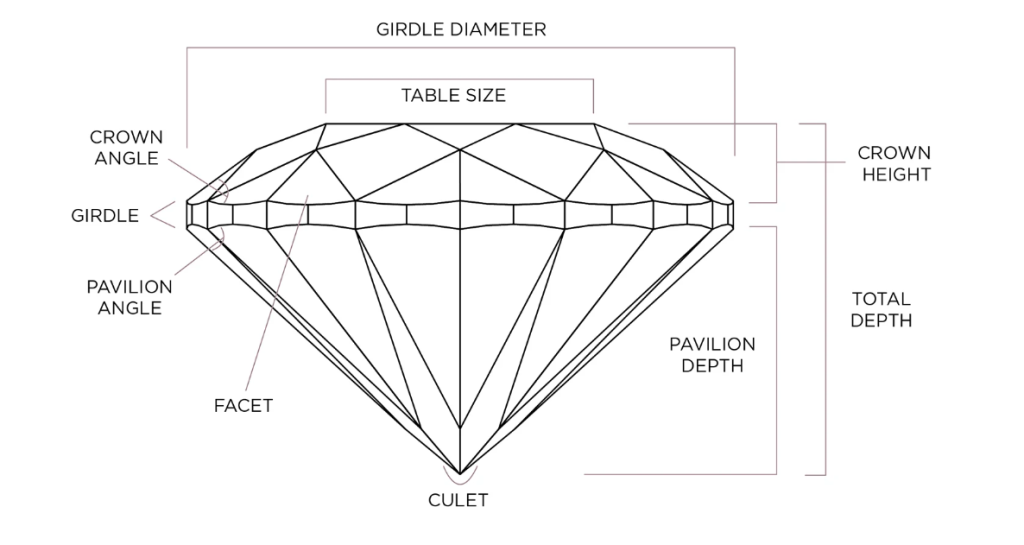
- Table Size: The largest facet on the top of the diamond. Ideally, it should be neither too large nor too small.
- Depth: The height of the diamond from the table to the culet (the bottom point). The right depth ensures that light is properly reflected within the diamond.
- Crown Angle: The angle between the girdle (the widest part of the diamond) and the table. It affects how light is refracted.
- Pavilion Depth: The distance from the girdle to the culet. It influences how light reflects internally.
Symmetry:
- Symmetry refers to the precision of the diamond’s shape and the alignment of its facets. Poor symmetry can cause light to be misdirected, reducing brilliance.
Polish:
- Polish describes the smoothness of the diamond’s surface. Well-polished facets reflect light more efficiently.
Cut Grades
Diamonds are graded on a scale from Excellent to Poor based on their cut quality. Here’s a breakdown of what each grade means:
- Excellent: Maximum fire and brilliance. Light enters and exits in a way that creates the best possible sparkle.
- Very Good: Very close to Excellent, these diamonds have slight variations in cut that may affect light performance minimally.
- Good: Reflects most light, but not as much as Very Good or Excellent cuts. Still a good option for those balancing quality and budget.
- Fair: Allows much light to escape from the sides, resulting in less brilliance and sparkle.
- Poor: Much of the light escapes from the sides and bottom, leading to a duller appearance.
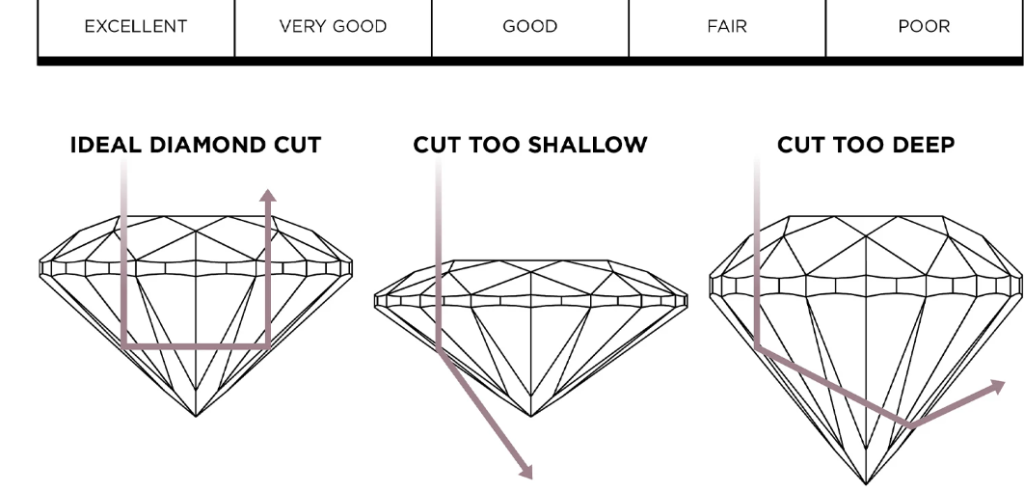
Why Cut Matters
A diamond’s cut is crucial because it directly affects the stone’s overall beauty. A diamond with perfect color and clarity can still appear dull if it has a poor cut. Conversely, a well-cut diamond can enhance the appearance of lesser clarity or color, making it appear more brilliant and attractive.
Maximizing Brilliance:
A diamond’s brilliance—its sparkle and shine—depends largely on the quality of the cut. The angles and proportions must be just right to ensure that light is optimally reflected.
Enhancing Perception:
A well-cut diamond can appear larger than its actual carat weight. The way the light is reflected can create an illusion of greater size and depth.
Balancing Value:
Investing in a diamond with an excellent or very good cut can be more cost-effective than seeking higher carat weight or perfect color and clarity. The enhanced sparkle and brilliance of a well-cut diamond can make it a standout piece.
When choosing a diamond, pay close attention to the cut. It’s the key to unlocking the gem’s full potential, turning it into a dazzling display of light and beauty. Whether you’re shopping for an engagement ring or a special piece of jewelry, prioritize the cut to ensure your diamond shines with unparalleled brilliance.
Remember, a diamond’s true beauty is revealed through its cut. By understanding and valuing this crucial aspect, you’ll be able to choose a diamond that captivates the eye and sparkles with timeless elegance.
